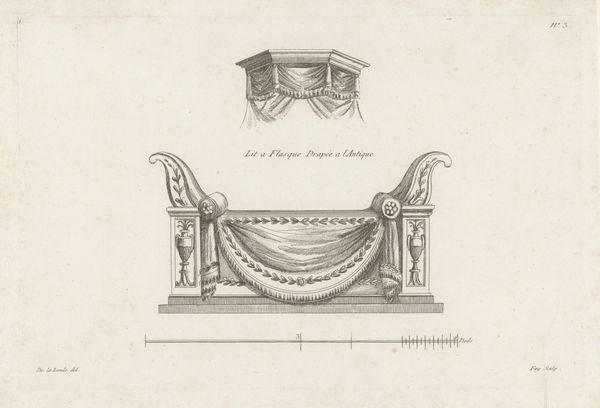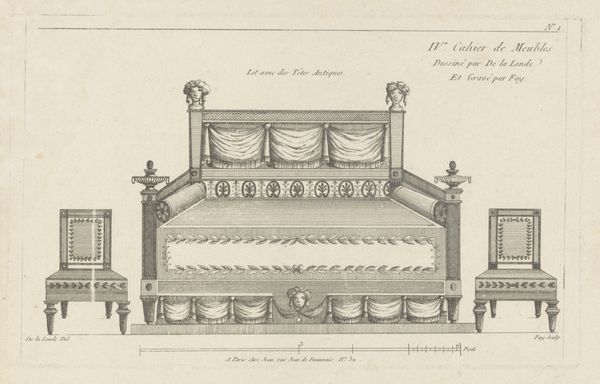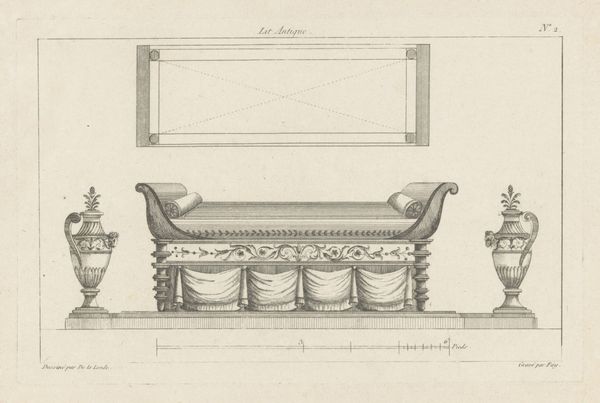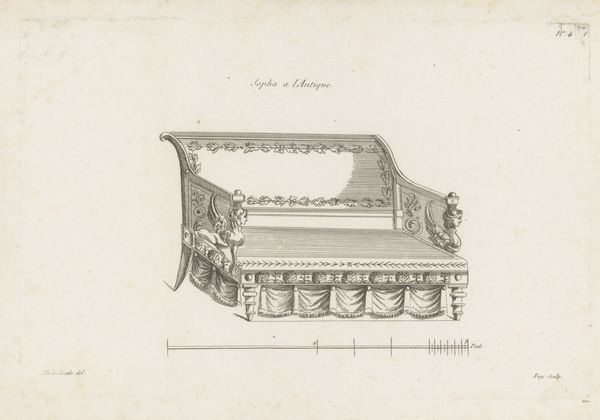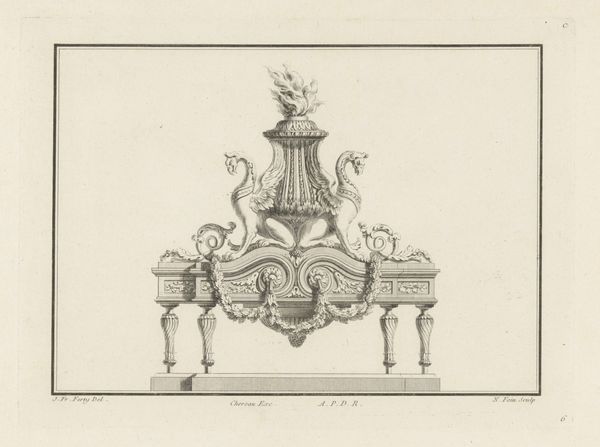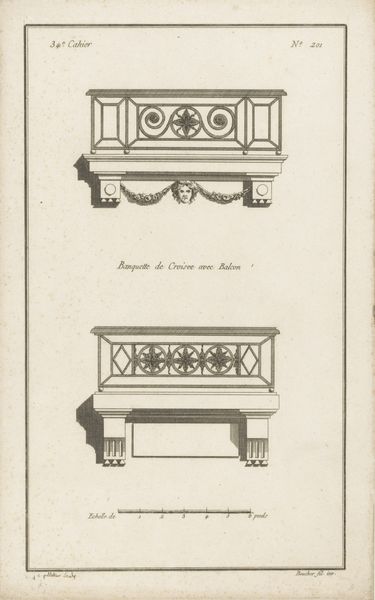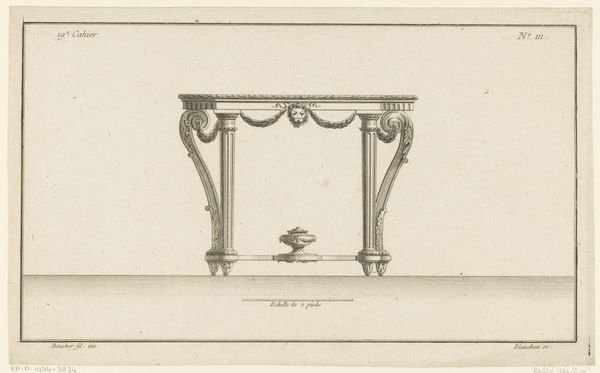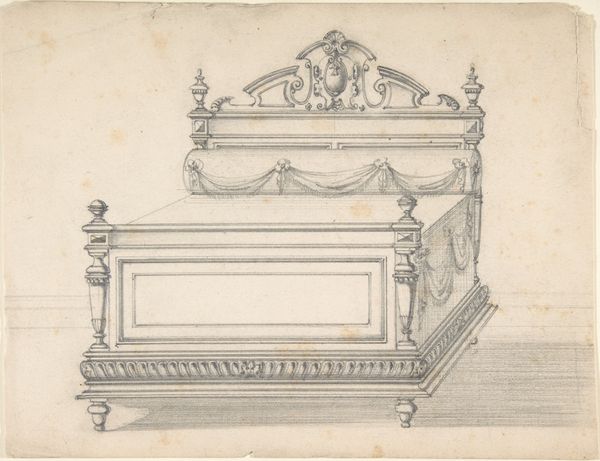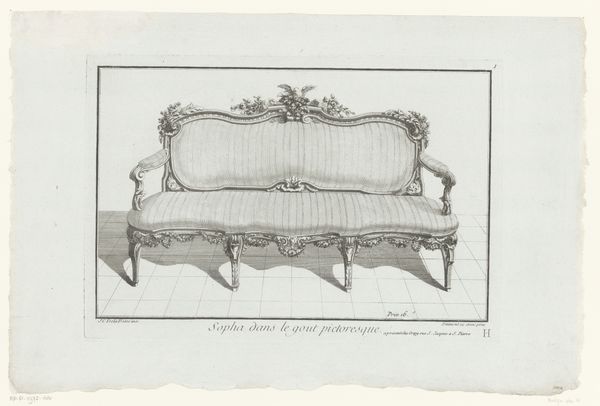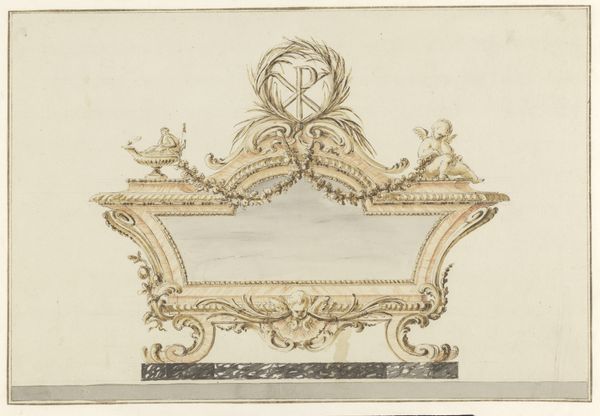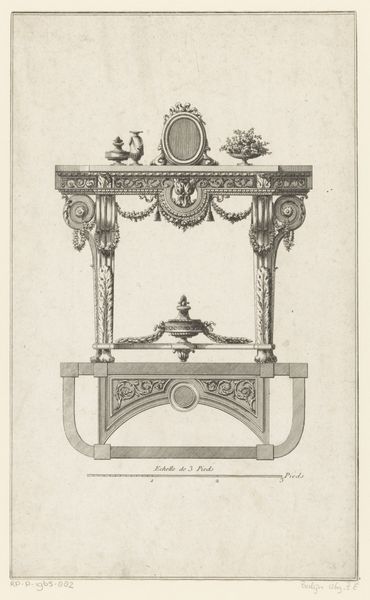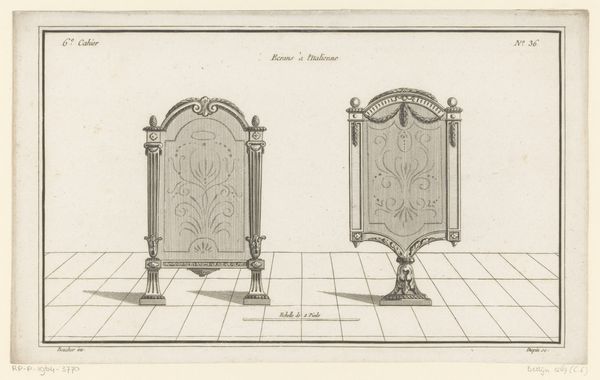
drawing, print, engraving, architecture
#
drawing
#
neoclacissism
# print
#
classical-realism
#
geometric
#
engraving
#
architecture
Dimensions: height 195 mm, width 296 mm
Copyright: Rijks Museum: Open Domain
Editor: This print, entitled "Dagbed" created by Jean Baptiste Fay between 1784 and 1796, presents an ornate chaise lounge, or daybed. I notice the careful attention to symmetry, the precise rendering of classical motifs… it feels very controlled and idealized. How do you interpret this work, especially considering its formal elements? Curator: Formally, it is interesting how the printmaker uses line to create the illusion of three-dimensionality. Note the geometric construction and how line weights articulate a complex object. Observe the strategic deployment of hatching and cross-hatching to build form and model shadow, enhancing the work's objective clarity. To what extent do these elements support the principles of Neoclassicism? Editor: The print really emphasizes the clean lines and balanced proportions favored in Neoclassicism, recalling ancient Roman furniture designs. The figures evoke the classical, but they also act structurally, serving a functional purpose in the composition. Curator: Precisely. This serves as an instructive demonstration of design more than as an emotive artwork. How might the emphasis on order and rational design connect with the broader intellectual climate of the late 18th century? Editor: I guess the detailed representation and geometric basis emphasizes the Age of Enlightenment. I hadn’t considered how much information can be conveyed through the deliberate absence of color, and an emphasis on idealized shapes. I feel I understand a lot more about the purpose and philosophy behind the work. Curator: Indeed. By attending to the formal properties and organizational structure of the image, one may gain further insight into its artistic and intellectual intentions.
Comments
No comments
Be the first to comment and join the conversation on the ultimate creative platform.
